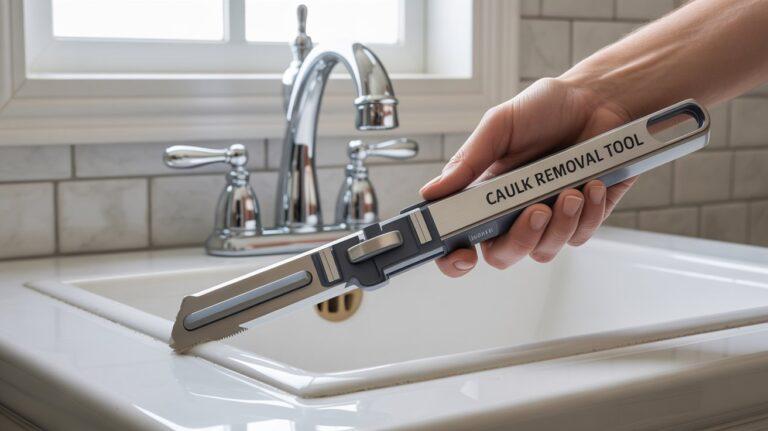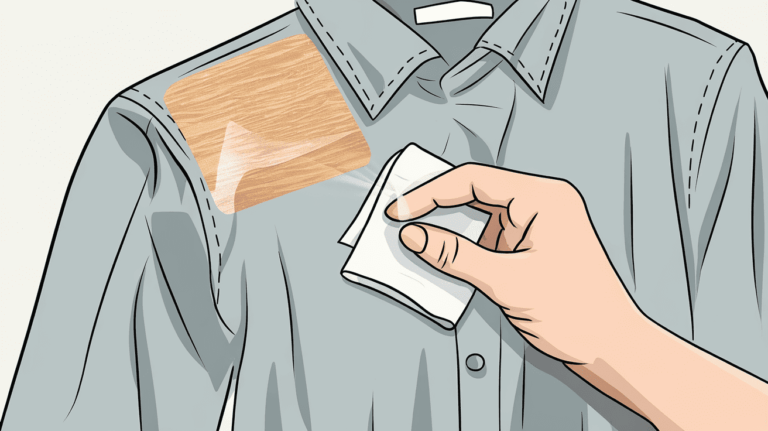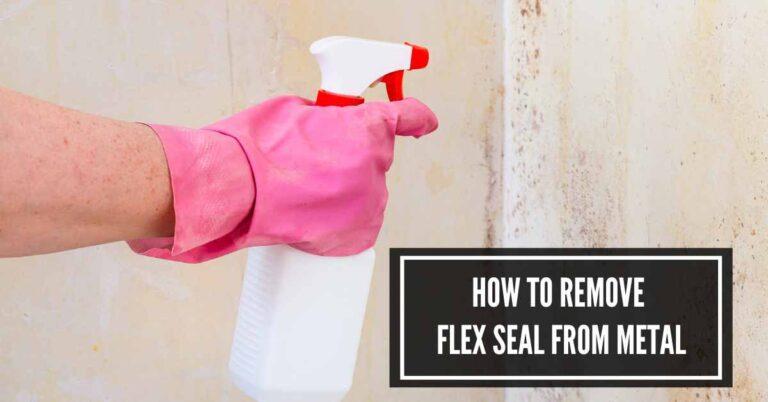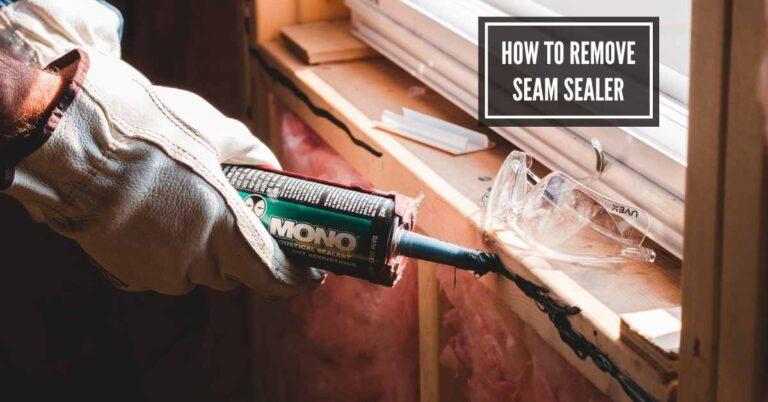How To Remove Flex Seal from Plastic Surfaces Easily !
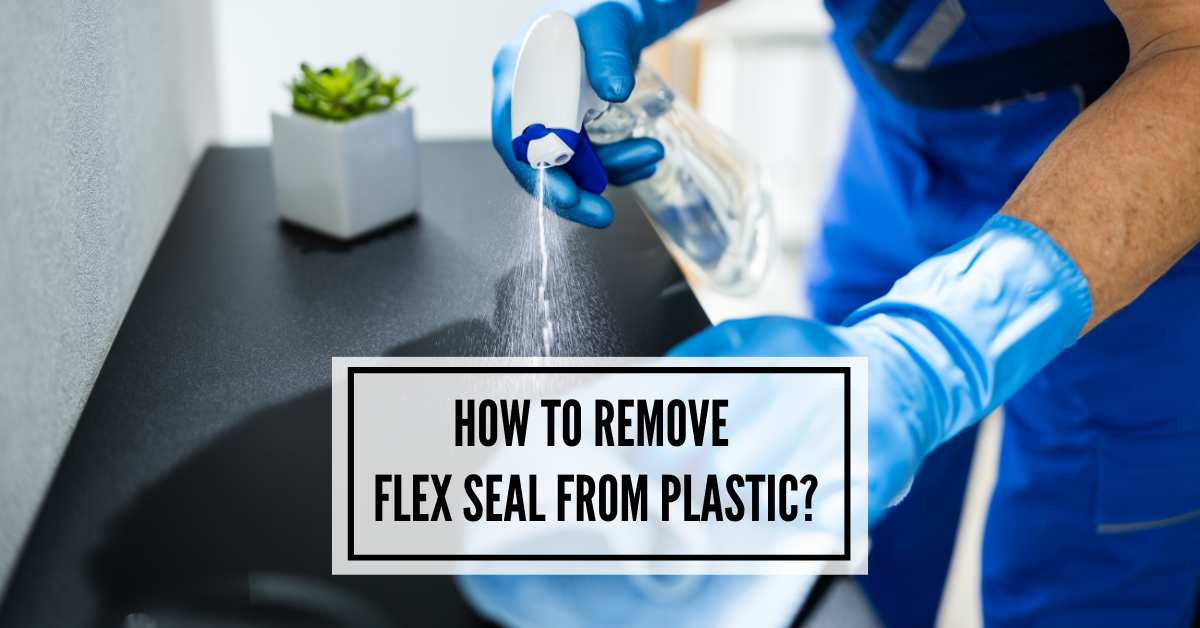
Flex seal is a thick liquid that forms a strong, waterproof barrier. You can apply this super thick rubberized paste to any surface to protect them.
But the problem arises when removing the hard adhesive from the surface. You may have incorrectly applied it or want to use a new coat after getting off the older one.
Do you know how to remove flex seal from plastic surfaces? Once this adhesive bonding product dries fully, taking it off is a bit tiresome and complicated.
In this article, I will help you with some practical options to get off this thick rubberized paste from your plastic surface. Don’t miss out on the post if you are really struggling!
What Can I Use To Remove Flex Seal From Plastic Surface?
Many options are available for removing flax seals from plastic surfaces.
But you want a reliable, effective, and safe option that won’t harm the plastic.
i) Rubbing alcohol
This ethanol-based liquid is made of isopropyl alcohol. They are non-corrosive to plastic surfaces and plastic-safe. However, flex seals are pretty strong.
You must use 90-99% isopropyl alcohol to get off all the substances of flex seals.
70% isopropyl won’t be sufficient to remove the flex seal as it contains 30% water. Hence, it is necessary to use higher concreated isopropyl alcohol.
It won’t damage the surface below the sealant. Isopropyl alcohol will soften the flex seal and make it easier to remove.
ii) Acetone
Acetone is made of isopropyl alcohol and water. If you have applied a flax seal to any hard plastics, such as ABS or polycarbonate, acetone appears to be a perfect choice.
It can show a reliable result to dissolve residues of flex seal quickly. But don’t use this cleaning agent on soft plastics. It will ruin the plastics rapidly.
However, if you have excessively over-sprayed the flex seal on the plastic surface, taking off the hard sealant will be tiresome and a bit laborious.
iv) Mineral Spirits
Do you want to remove the flex seal from soft plastics? If so, mineral spirits are the best choice.
This petroleum-based solvent cleaner will soften the flex seal residue and loosen its bond. 100% petroleum distillates are used to make mineral spirits.
They will break down the hard substances of the flex seal. This makes it effortless to remove the sealant properly.
v) WD-40
It is a petroleum-based lubricant that is made of different hydrocarbons. WD-40 is a highly effective bio-catalytic cleaning agent to remove various sealants from other surfaces.
Make sure to use a multi-use version. It is perfect for almost all regular plastics, such as PVC, PP, HDPE, or ABS.
You can remove flex seal tape from plastic. WD-40 will weaken the hard substances of the flex seal after soaking the solvent for a few minutes.
How To Remove Flex Seal From Plastic & Rough Porcelain ?
It won’t be a complicated task to take off this complex adhesive product if you use the right product and do it correctly.
The followings are the steps to get off all substances of flex seals from any hard or soft plastics. Keep scrolling!
Step: 01— Wear Protective Gloves
Wear a pair of Butyl rubber gloves. They are made of synthetic rubber to protect your hands from various chemicals and acids.
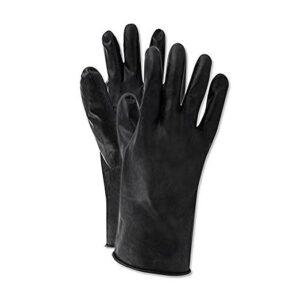
Plus, these gloves are not prone to absorb any liquids when you touch them. Your hands will be safe from harmful chemicals like alcohol, ketones, nitro compounds, etc.
Step: 02— Scrape Off Excess Flex Seal
Grab a scraper tool, such as a straight-edged, flexible putty knife or a plastic scraper, to scrape away the broken or cracked flex seal from the plastic surface.
Use pushing motion carefully to avoid harming the below plastic. Push toward the areas from where you want to remove the flex seal spray from the plastic.
If the flex seal is too hard, pour some boiling water. Boiling water won’t damage or melt the plastic as 100° centigrade water is not hot enough to melt the plastic.
Wait for 10 to 15 minutes after pouring off the hot water. The flex seal will become softer and make the scraping task easier.
Step: 03— Apply Rubbing Alcohol Or Acetone
Flex seal is a powerful adhesive bonding product. If already 48 hours are passed, it has become completely dry and hard.
You must use a softening product to remove all the substances from the plastic surface.
Many options are available such as rubbing Alcohol, Acetone, mineral spirits, WD-40, etc.
But I recommend you use rubbing Alcohol or Acetone as it is more effective than other options.
Take a fresh fabric. Apply rubbing Alcohol or Acetone on the cloth and lightly press it against the plastic surface to get off the remaining flex seal.
Let the wet fabric sit for a few minutes and make it softer. Don’t displace it during this period.
Step: 04— Gently Rub The Area
Once the vulnerable area becomes soft enough, take the drenched fabric and rub the softened flex seal in a circular motion.
But why use a circular motion, right? Circular wiping helps to reduce the amount of stuff that remains after cleaning.
After all, the bumps on the cloth keep going over the liquid that the other threads didn’t pick up.
You can get rid of much more when you wipe in different directions instead of single-directional wiping.
Make sure to maintain gentle pressure. If you press too hard, it may scratch the plastic surface.
Step: 05— Clean The Area
Are you still seeing any residues of the flex seal? Is the flex seal too thick? If so, you may need to repeat the prior steps until everything is removed.
Once you remove everything from the plastic surface, clean it with warm soapy water.
Grab a fresh rug and put it inside the warm soapy water. Gently wipe the plastic surface to remove the flex seal from a plastic pipe or other objects.
Finally, rinse it with clean water to make it fully clean. Use another fresh fabric to make it dry. Alternatively, you can let it try in the air.
FAQ’s
Can I use nail polish remover to get rid of Flex Seal?
While nail polish remover contains acetone, which can break down Flex Seal, it might also damage certain plastics. Always test a small area first.
How long should I let the solutions sit on the Flex Seal before scrubbing?
It varies, but usually, 5-10 minutes should suffice.
Is Flex Seal harmful to plastics?
Not generally, but it’s always a good idea to check the manufacturer’s guidelines.
Can I reapply Flex Seal after removing it?
Absolutely! Just ensure the surface is clean and dry.
Why is Flex Seal so hard to remove?
Its adhesive properties are designed to provide a long-lasting seal, which can make removal challenging.
Closing Thoughts
Surely, getting flex seals from any substances is tiresome, as this adhesive is pretty hard to remove once it becomes fully dry. You can imagine how much elbow grease you have to go through if you want to take it off after one or several years.
There might already be a lot of dust, dirt, and other objects accumulated on top of the flex seal. But I always try to make every job as simple as I can for my readers. You have already learned how to remove flex seal from plastic surfaces step-by-step. Let me know if you are facing any issues.

I am Robert Sandin, a professional sealing expert with a diverse range of expertise. From concrete to various other materials, I possess in-depth knowledge and experience in the art of sealing. On my website, I offer valuable tips and expert recommendations on sealing techniques and products for different materials. Whether it’s concrete, wood, metal, or more, I am committed to providing you with the guidance you need for successful sealing projects.


